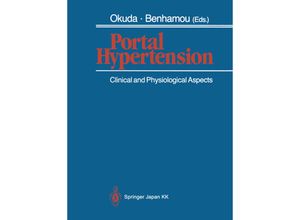Portal hypertension is the abnormal pathophysiologic state that develops in liver cirrhosis and
certain other disorders with characteristic clinical and hemodynamic features. There has been
great progress in our under standing and management of portal hypertension particularly in the
diagnostic and therapeutic approaches. The so-called Banti's syndrome a disorder whose
existence had long been questioned is now a well-defined portal hypertensive disease. The
recently introduced Doppler ftowmetry is currently yielding new information on portal
hemodynamics. Endoscopic sclerotherapy and beta-blockers have come to be widely used in the man
agement and prevention of variceal bleeding. In spite of all these advances a number of
unsolved questions remain such as whether sclerotherapy pharmacotherapy or surgery is
warranted for prevention of bleeding which is more effective as an elective treatment the
surgical or endoscopic approach and whether surgical portacaval shunt should be totally
replaced by selective shunt operations. These new developments and problems are clearly and
comprehensively described and discussed by the foremost authorities in 44 chapters which are
divided into five sections: 1) Patho physiology 2) Hemodynamic Investigations 3) Imaging
Investigations 4) Clinical and Pathological Features and 5) Esophageal and Gastrointestinal
Bleeding. The primary goal of this monograph to provide a framework of patho physiology of
portal hypertension with authoritative descriptions of the clinical and laboratory
manifestations of various portal hypertensive dis orders has clearly been achieved by these
excellent contributions.

